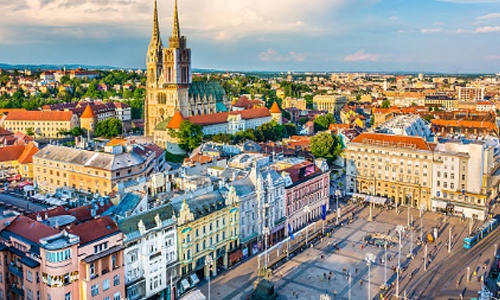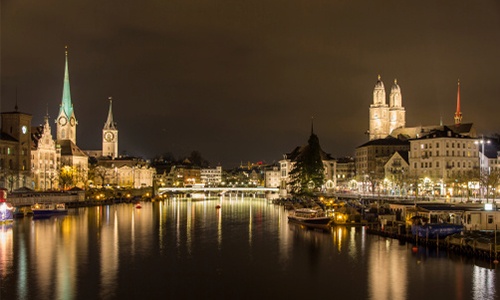
Zagreb, Croatia
Croatia is small country with 4.5 million people located on south Europe across the Adriatic Sea from Italy. It is about the size of West Virginia. Part of Croatia is a barren, rocky region lying in the Dinaric Alps. Over one-third of Croatia is forested. The country has a long and dramatic coastline with the Adriatic Sea, in which the country has over 1 000 islands and islets, of which just 48 are permanently inhabited. Because of its geographic position, Croatia represents a blend of four different cultural spheres. It has been a crossroad of influences of the western culture and the east—ever since division of the Western Roman Empire and the Byzantine Empire—as well as of the Mitteleuropa and the Mediterranean culture. The most important sectors of Croatia’s economy in 2014 were wholesale and retail trade, transport, accommodation and food services (21.2 %), industry (21.1 %) and public administration, defense, education, human health and social work activities (15.4 %). Croatia’s main export partners are Italy, Bosnia & Herzegovina and Slovenia while its main import partners are Germany, Italy and Slovenia. Economic output was dominated by the service sector which accounted for 66% of GDP, followed by the industrial sector with 27.2% and agriculture accounting for 6.8% of GDP. Tourism dominates the Croatian service sector and accounts for up to 20% of Croatian GDP. Croatia has unpolluted marine areas reflected through numerous nature reserves and 116 Blue Flag beaches. Croatia is ranked as the 18th most popular tourist destination in the world. By its historical tradition, cultural relations, and above all, its urban planning, Zagreb is a distinctly central European city situated in the middle of the triangle of Vienna, Budapest and Venice. It has always been and remains a part of the cultural circle of central Europe; a city of a million inhabitants that has managed to stay romantic, clean, and which offers visitors pleasant walks and enjoyment in a city full of parks and pedestrian zones. In short, it is a city that has managed to preserve its soul and identity, its cultural and historical heritage.






